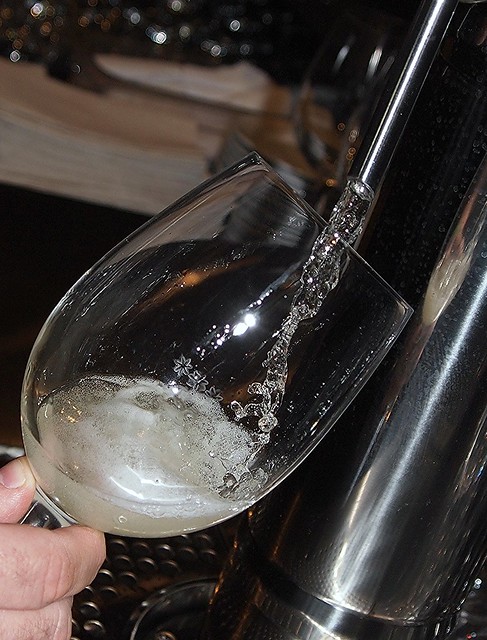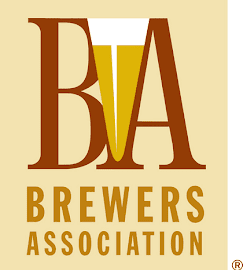It's a New Zealand Sauvignon Blanc: stored in a keg, pushed through a draught system, poured from a tap ... at a brewpub.
American restaurants —'white-tablecloth' or pub, 'hip' or 'neighborhoody'— have begun pouring wine from kegs; and wineries are offering them greater choice in draught wines, better than generic 'red or white.'
Wine on tap flows through a 304 grade stainless draft system —very similar to that used for beer— pushed out of kegs using a blended mixture of gasses, usually 75% nitrogen and 25% carbon dioxide. This blend preserves wine quality and freshness, without adding bubbles. (Using a higher concentration of carbon dioxide would carbonate the wine, inappropriate, unless, of course, the wine were a sparkling wine.) The equipment installation cost for a restaurant is not that great, especially if a beer-dispense system is already in place.
The standard keg size for wine is 5.16 gallons, which, in wine-measurement, is 19.5 liters (the equivalent of twenty-six 750-ml wine bottles: two cases plus two bottles). * White and red wine kegs should be served from different refrigerated compartments: the white wine at or about 42 °F; red wine at or about 55 °F. (Room temperature red wine, draught or bottle, is not a refreshing beverage. Chill it slightly.)
At present, it's mostly California wineries that are kegging their wines. They ferment and age their wines as usual, and ship the results in bulk containers to facilities which package the wine for them. (Of course, there's no reason, except cost, for a winery, like a brewery, to install its own kegger.)
At the restaurant, there's no waste, no corks to un-cork, no bottles (and corks or screwtops) to dispose of, and little to no spoilage. It's clean, green, 'cool'; and usually at or just below the equivalent per-ounce cost of a bottle, depending on the wine poured.
As seen at Ornery Beer Company, in Woodbridge, Virginia, on 28 August 2015.
-----more-----
- More images: here.
- * Why 5.16-gallons for the volume-size of the keg? Because 5.16 gallons is 1/6th of a beer barrel, and a common size of keg in the beer world, where it is often referred to as a "sixtel." Keep in mind that a 'barrel' in this sense is a not an actual container. It's a unit of measurement: 31 U.S. gallons. Full-size beer kegs are half of that: 15.5 gallons.
- Pic(k) of the Week: one in a weekly series of personal photos, usually posted on Saturdays, and often, but not always, with a good fermentable as a subject. Camera: Olympus Pen E-PL1.
- Commercial reproduction requires explicit permission, as per Creative Commons.
- For more from YFGF:
- Follow on Twitter: @Cizauskas.
- Like on Facebook: YoursForGoodFermentables.
- Follow on Flickr: Cizauskas.
- Follow on Instagram: @tcizauskas.












No comments:
Post a Comment
Comment here ...